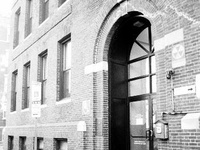This was the recount since Cambridge computerized its voting system in 1997.
When ballots had been counted manually, the initial vote counts frequently took as long as a week—so election results were not known for days.
Computerization has sped up the time frame for an initial vote count to less than 24 hours. But, as election officials found out this fall, the new system poses new problems for recounting an election.
Cambridge operates on a proportional representation system and candidates are elected to the city council and school committee based on a complicated system of vote quotas and distributions.
Voters rank candidates on the ballot in order of their preferences. When votes are counted, some candidates reach the “quota” needed for election just from ballots where they were ranked number one. Once a candidate has reached quota, any extra votes for that candidate are “distributed” to the next-choice candidates on those ballots.
But not all of these extra ballots are distributed. Instead, for example, every fourth ballot is counted and the rest are skipped for the time being. This interval is different for each so-called “round” of distributions, and the rounds continue until all the offices are filled.
What makes the system so precarious is that it depends on the order in which the ballots are counted. And that order is determined—partly by pure chance—by a two-part procedure.
First, two weeks before the election, the city’s 42 precincts are put in order by randomly drawing them from a hat. Then, on election day, the order of ballots within each precinct is the order in which they are processed by election officials—with a small randomization procedure added in electronically at the precincts.
Critics say this procedure essentially leaves Cambridge elections up to chance.
Usually this chance factor is not large enough to affect the results, they say. But in close elections, tiny modifications to the ballot order can entirely change the election.
The 2001 school committee election was one election where such a small change could have made a big difference.
Winters and Stephen I. Owades, who helped run the recount, each conducted computer simulations of the school committee election in which slight ordering changes would have resulted in different candidates making it onto the school committee.
Even changing one ballot—moving the first ballot to the last position—would have altered the counting order and produced a different outcome.
Goverman, the auditor, seconded their objections in his report to the election commission.
“The Commission and the City are fortunate, insofar as preventing excessive demands for manual recounts, that the results remained the same,” he wrote.
Read more in News
Conservative Activist Pulls for Permanent Tax Cuts













